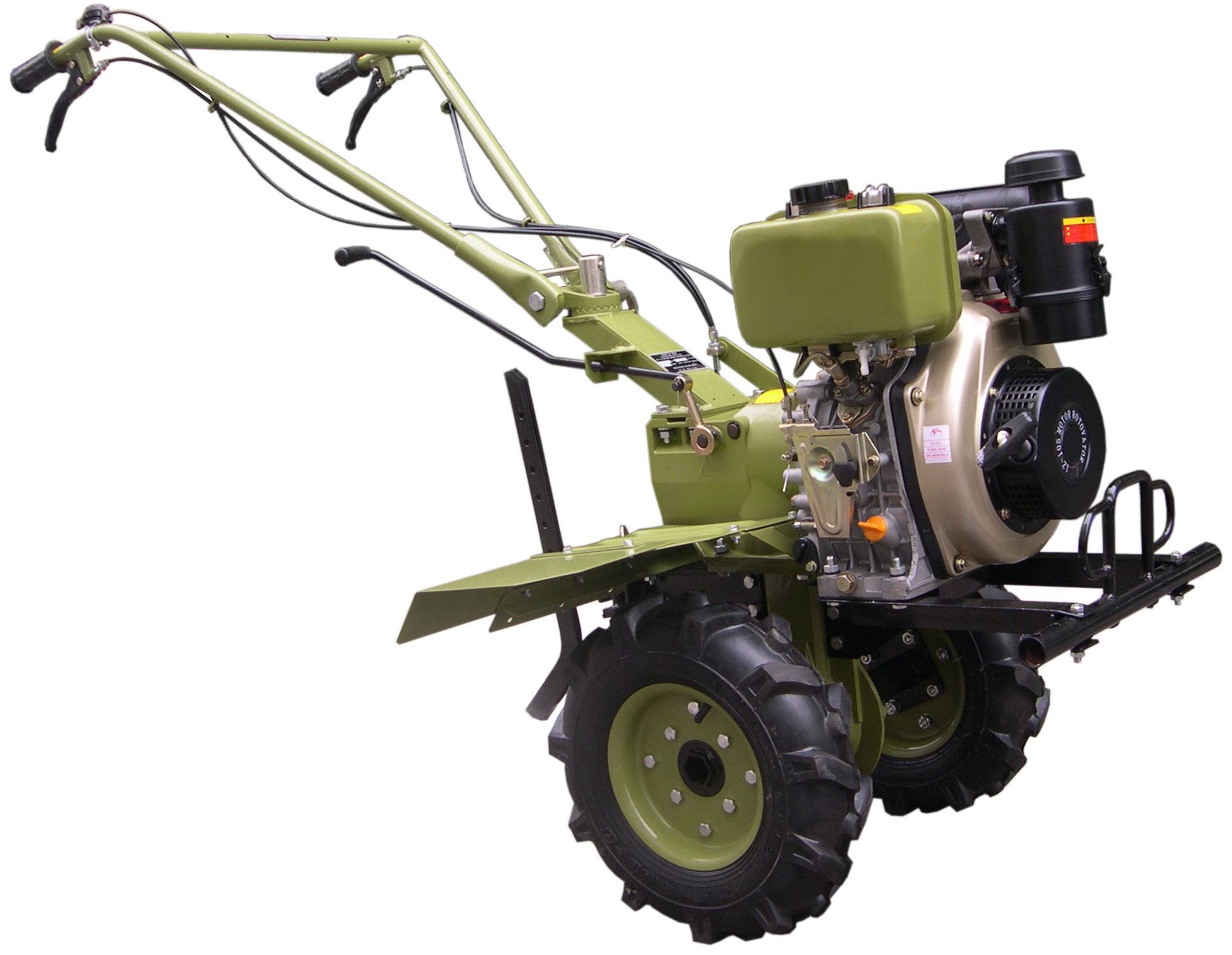Rating of the best potato varieties for Moscow and Moscow region in 2025
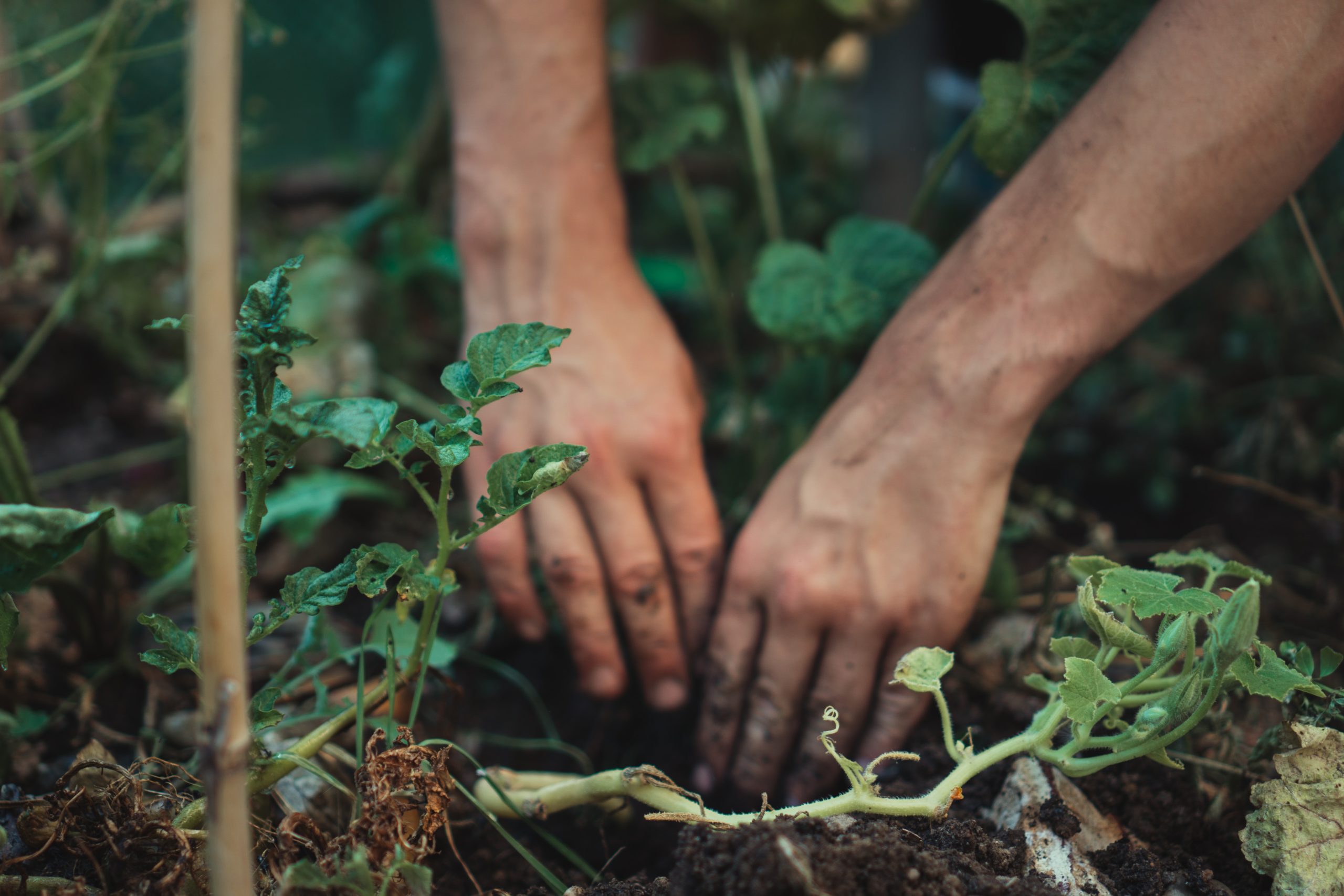
Potatoes are versatile and the most desired root vegetable on the tables. In our country, it is considered the "second bread". Many gardeners try to grow it on their plots. But this doesn't always work out. When landing, it is necessary to take into account the peculiarities of the climatic zone.
The climate in Moscow and the Moscow region is temperate continental, which indicates cool weather in spring and not always warm summer. Such conditions dictate certain rules for planting and caring for potatoes. Not all crop varieties are suitable for cultivation in this region. The best varieties of potatoes for Moscow and the Moscow region will be discussed below.
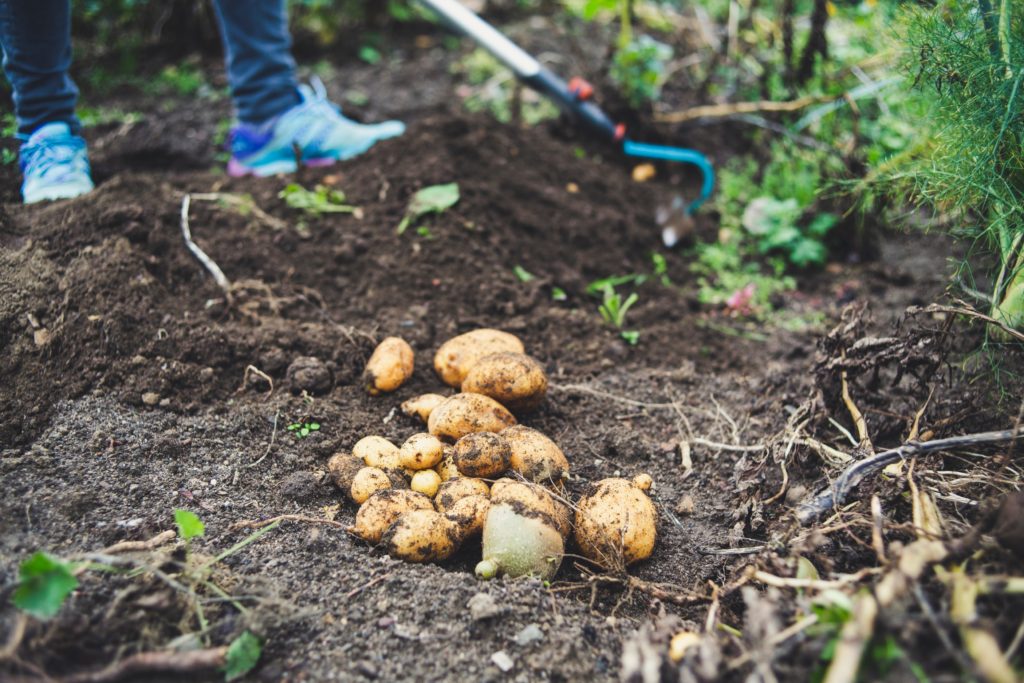
Content [Hide]
Landing and care
The best months for planting vegetables in this area are April, May, June. The type of crop is important when planting. But there is no need to hurry with the landing. In general, potatoes do not tolerate cold well, except for some early varieties.
The weather becomes consistently warm from the second half of April. At this time, the soil begins to warm up. Temperature control is important.
About a month should pass from the end of the cold weather. So that the root crop does not freeze, the earth must warm up well. It is better to plant it no earlier than the end of April, the beginning of May.
Landing includes the following steps:
- tillage;
- selection of planting material and germination;
- processing from phytophthora;
- landing work.
For each variety of potatoes, certain conditions for planting and growing are needed. But there are general recommendations that help to get a good crop crop.
The air temperature should be + 10 ° C, soil - from + 9 ° C for a month. You can take potatoes for planting with or without sprouts. Some nuances should be taken into account.
When planting a crop without sprouts, preparation is not required. All you need is good weather conditions. The tuber must have time to release sprouts, this takes time and warm earth.
For planting potatoes with sprouts, the seed must be prepared in advance. This technique is not required, but it speeds up the ripening period of the crop.
Whole, healthy tubers are selected. Then they are laid out in boxes at room temperature. During the week they are sprayed with water and then cleaned in a cool place. It is advisable not to keep potatoes in a warm place, as a culture with long sprouts does not develop well.
The optimal size is considered a tuber with a chicken egg. Large specimens can be cut in half, while small ones will develop poorly. Vegetables can be treated with growth stimulants or fertilizer solutions.
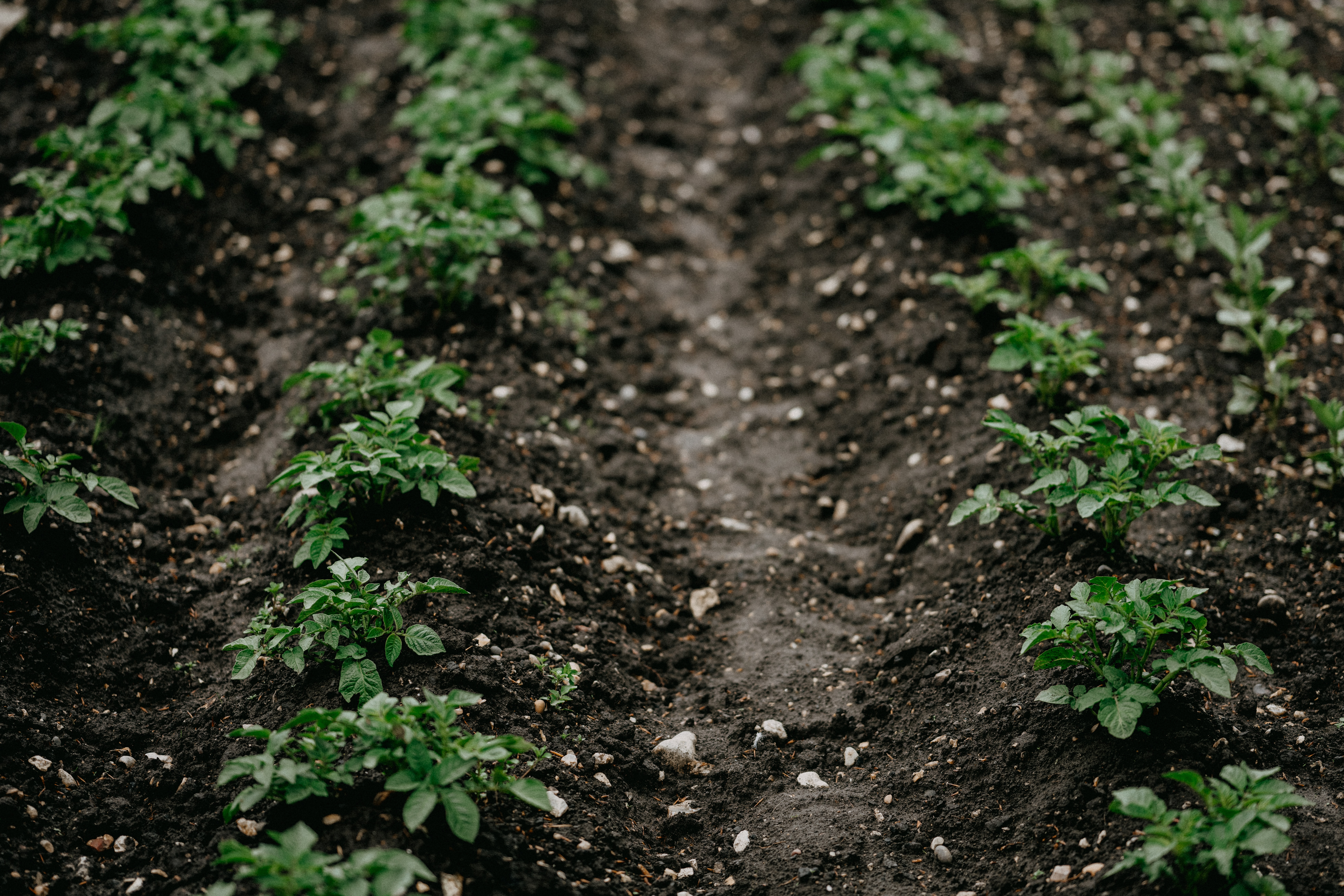 Growing conditions
Growing conditions
To get a good and big harvest, this crop needs:
- average soil acidity, soil liming gives a qualitative result;
- the plant should receive nitrogen, potassium, magnesium, phosphorus and other mineral fertilizers from the soil;
- the introduction of sand and increased doses of organic matter;
- hilling improves air access;
- watering during a drought;
- preparation for landing.
The depth of planting depends on the composition of the soil.
Potatoes grow best on light, fertilized, air- and water-tight soils. Fertilizer should be applied in advance. If the earth is clayey, sand must be added when digging. It is undesirable to grow potatoes in one place for several years in a row.
The optimal predecessors for vegetable crops are:
- beet;
- mustard;
- onion;
- garlic;
- rye;
- cucumbers;
- carrot;
- legumes.
Bad predecessors are tomatoes, peppers, eggplant and physalis.
The type of vegetable affects the harvest time:
- for the first use, an early variety is planted, you can harvest in 40–50 days;
- medium crops ripen in 2.5 months;
- late ones are planted for winter storage, the crop is ready for harvest in 4 months.
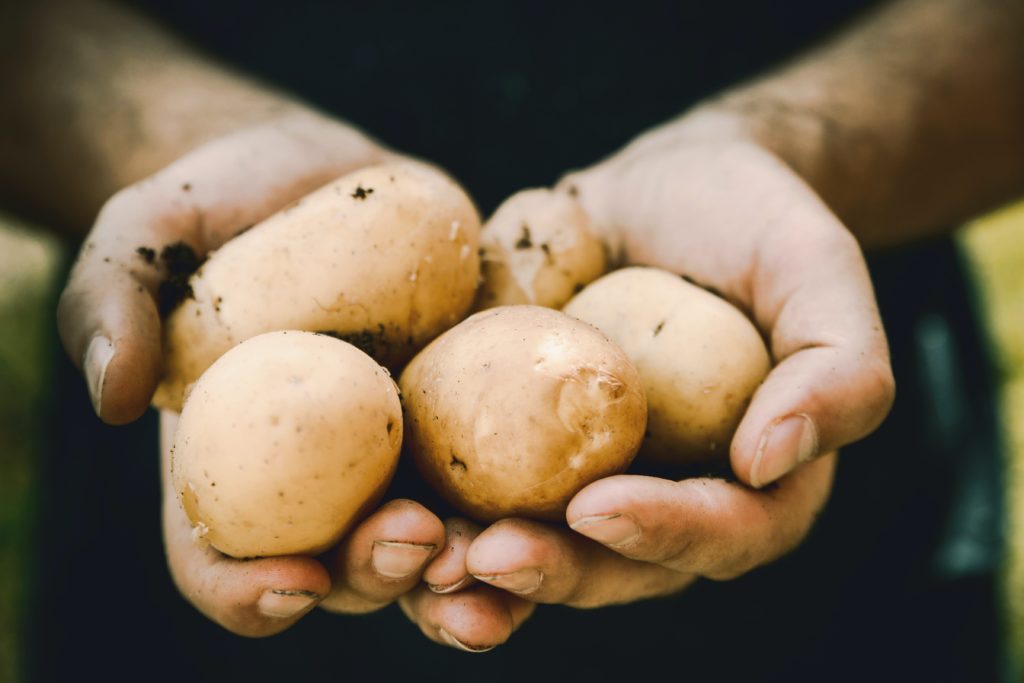
Variety selection
Potato is considered the main dish of Russian cuisine. It is grown for sale and for themselves. It is important to correctly navigate and choose a variety that fits all the characteristics.
Summer in Moscow and the Moscow region is cold and rainy. It is necessary to find a variety that will be resistant to bad weather and able to resist diseases.
When choosing it, it is necessary to take into account the yield, ripening time and starch content.Moscow and the Moscow region belong to the zone of risky farming. It is desirable to grow mainly early varieties there: from very early to medium early. So in a few months the vegetable will fully ripen and will have time to produce a quality crop in a short time.
Agronomists believe that only domestic varieties are ideal for the Moscow region. They are well kept, no worse than foreign samples. So far, unfortunately, potato seed production is carried out in a small volume.
In addition to the ripening time, when choosing a potato variety for Moscow and the Moscow region, it is desirable to take into account resistance to fungal diseases.
The choice of potato variety is essential for those who want to get a good harvest. Breeders believe that it is impossible to create the perfect variety. Therefore, to get a good harvest, you need to plant several varieties.
landing areas
Potatoes grow best in sunny areas. There should not be fences and trees nearby. With a lack of light during the growing season, the plant grows slowly. The leaves eventually turn yellow and the bush begins to die.
Vegetable loves loose soil. In dense soil, small and deformed tubers are formed. During the season, it is necessary to process the site 2-3 times, then the plant will develop better.
When the soil is heavy, it is advisable not to grow late varieties. If the site is wet, the yield will be greater than during drought. On light soils, there are always a lot of potatoes on a bush.
Landing methods
The most popular way of planting a crop is considered to be under a shovel. To do this, you need to make holes and put a vegetable in them. The plot is planted in rows or in a square-nested way. On heavy soil, holes are made shallow, no more than 7 cm. On light soils, roots are deepened to 10–12 cm. Ash, humus, and manure are introduced into the hole.The distance between the holes is 40 cm, in order to make it convenient to take care of the plant. Then sprouted potatoes are placed in the recess and covered with earth. At the end of the work, the entire landing area is leveled with a rake.
But this method of planting is not suitable for all types of soil. If the ground is clayey and groundwater is close, the ridge planting method is best. With the help of a tractor or walk-behind tractor, hills 20 cm high are raked. Holes are made at their top, the distance between them is 30 cm. The distance between the ridges is 70 cm. A tuber is placed in the hole.
This method is not suitable for sandy soil. The ridges dry out quickly and need to be watered frequently. For this species, a trench method is suitable. In autumn, trenches are made in the ground with a depth of 30–40 cm. The distance between them should be 70 cm. A layer of hay 10–15 cm is placed in the recess. Then ash and manure are scattered along the trench. During the winter, everything will be processed, and the land will become fertile. In the spring, potatoes are placed in the trenches and sprinkled with earth.
If there is a lot of space on the site, then you can grow potatoes in a square-nest way. To do this, the landing area is divided into squares with a side of 80 cm. Then a hole is dug in each corner of the square. Compost, manure and potatoes are put in it.
During cultivation, it is necessary to put humus under the bush. This method replaces hilling, care is minimal.
An interesting method of growing potatoes under straw, proposed by the agronomist Rytov. The tubers are not buried in the soil, but put in a hole and covered with straw on top.
The straw must be kept moist for the plant to grow faster. A small layer of earth is poured over the straw. This method requires less effort. The yield with this method is high.
There is a wide variety of options for growing vegetables.Experts advise choosing a method taking into account the location of the site, the quality of the planting material and their capabilities.
Cleaning
When the tops have fallen and dried well, it is time to harvest.
But the best way to understand whether the potatoes are ripe is to periodically dig up the bushes from different places on the site. Dry and sunny day with a temperature of + 10 ° C in the morning, you can start harvesting potatoes. In this case, the vegetable is easy to clean from dirt. This must be done very carefully, protecting the tubers as much as possible. On loose soils, this can be done with a pitchfork. On loamy - with a shovel.
After digging up the potatoes, lay them out on cardboard in the shade. The crop is sorted and part is left for planting the next year. Bring the dried tubers into the room and keep them like that for a week. Then transfer to storage in a dark basement with a temperature not exceeding 5 ° C and an air humidity of 80–90%.
How to store
In autumn, preparations for winter storage of the crop begin. With proper storage, the culture lies until April. Different varieties are stored for a certain time. Early ripe lies 3 months. Late ripening is much longer.
It is best to store the vegetable in the cellar at a temperature of +2 - +4 ° C. From above it is covered with burlap. But not on the floor, but on a wooden crate. If condensation starts to drip from above, it will drain down.
At least once every two weeks, the tuber is inspected, the spoiled ones are removed. It is not recommended to wash the culture before storage. If moisture remains on it, then bacteria will begin to multiply on the potato, and it will become moldy.
It is advisable to divide the storage space with partitions. So it is convenient to sort potatoes and store different varieties. Do not put root crops in plastic bags. Moisture will collect inside and they will start to rot.
For these purposes, it is necessary to use bags made of natural fabric.Burlap passes air, protects from light and greening.
You can store potatoes in nets. The low price and the ability to see spoiled tubers make this material popular among gardeners. But the mesh does not protect from light. Which can lead to greening of the tubers.
Often potatoes begin to deteriorate during storage. This can happen when the storage temperature is violated, poor ventilation, or excess carbon dioxide.
If the tuber is wrinkled, then the vegetable has been under the influence of high temperature for several hours.
Overview of potato varieties suitable for
Early
Nandina
votes 0
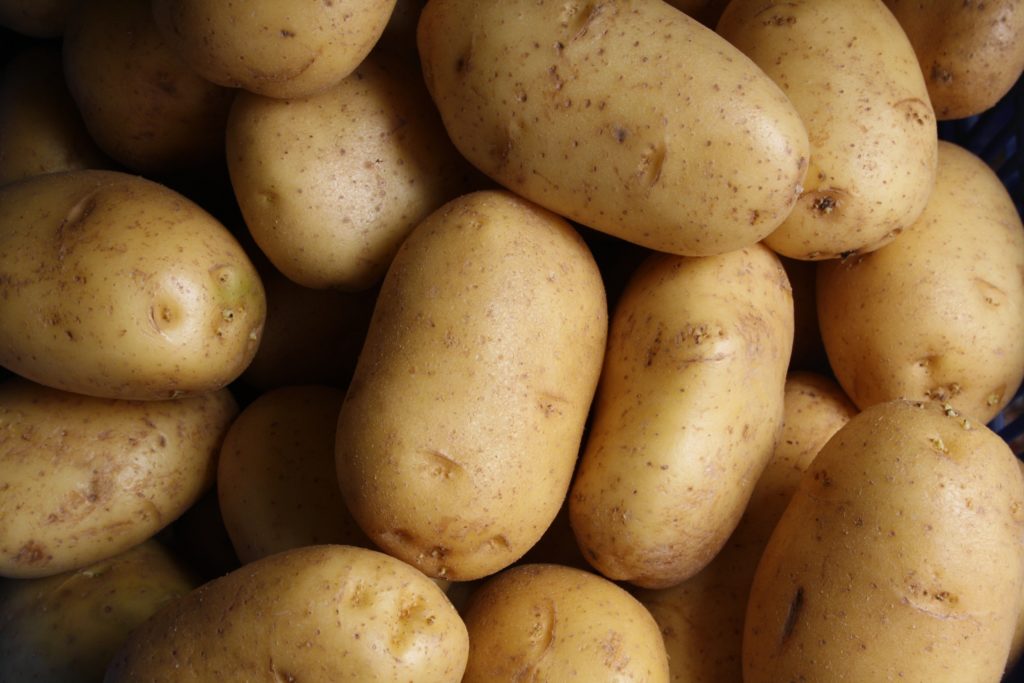
The type of culture is super early, belongs to the German selection. The ripening period is 1–1.5 months. The variety has a high yield. Round tubers of small size. The eyes are small. The peel is thin, the flesh is yellow. Suitable for frying. In addition, potatoes are boiled and baked. Does not fall apart when cooked. The taste is average.
- early;
- resistance to certain diseases;
- ease of care;
- long keeping quality;
- a bountiful harvest.
- prone to late blight;
- sprouting tubers require special storage;
- average taste.
Ivory Russet
votes 0
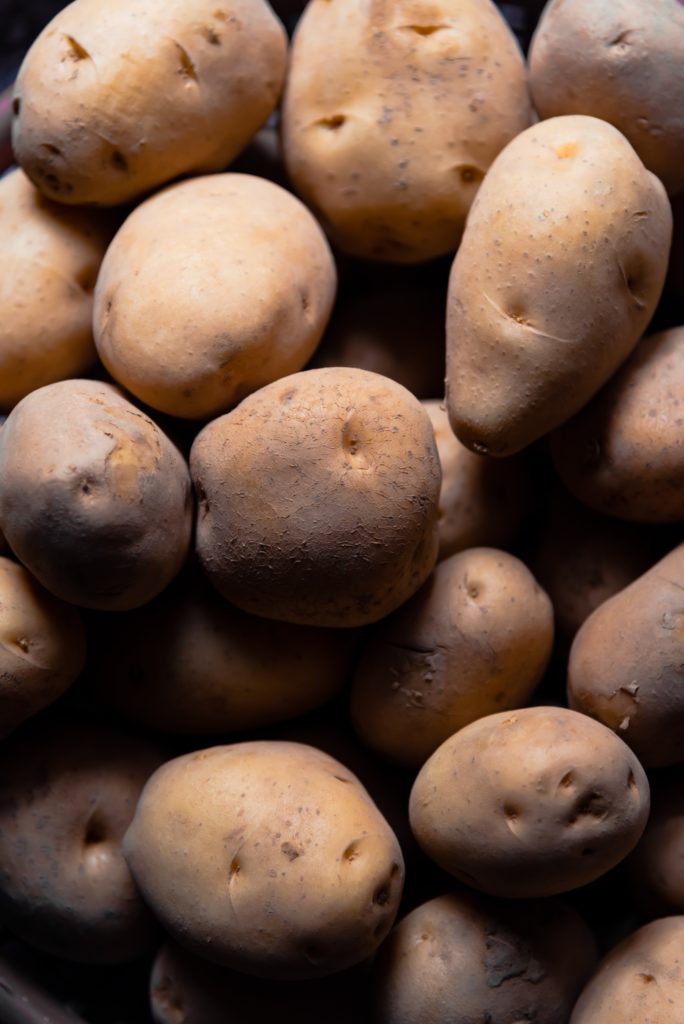
An early variety from the Netherlands. Suitable for making French fries, for mashed potatoes. The shape of the potato is elongated. The flesh of the tuber is white, the peel is yellow. The taste is good. You can harvest the crop as early as 45 days after germination. If the root crop is allowed to ripen for another 10 days, the yield will increase. The amount of starch is quite high - up to 18.5%.
- resistant to fungal diseases;
- excellent taste;
- white pulp;
- early ripe;
- starchyness.
- demanding on weather conditions;
- cultivation practices must be followed.
Lapis lazuli
votes 0
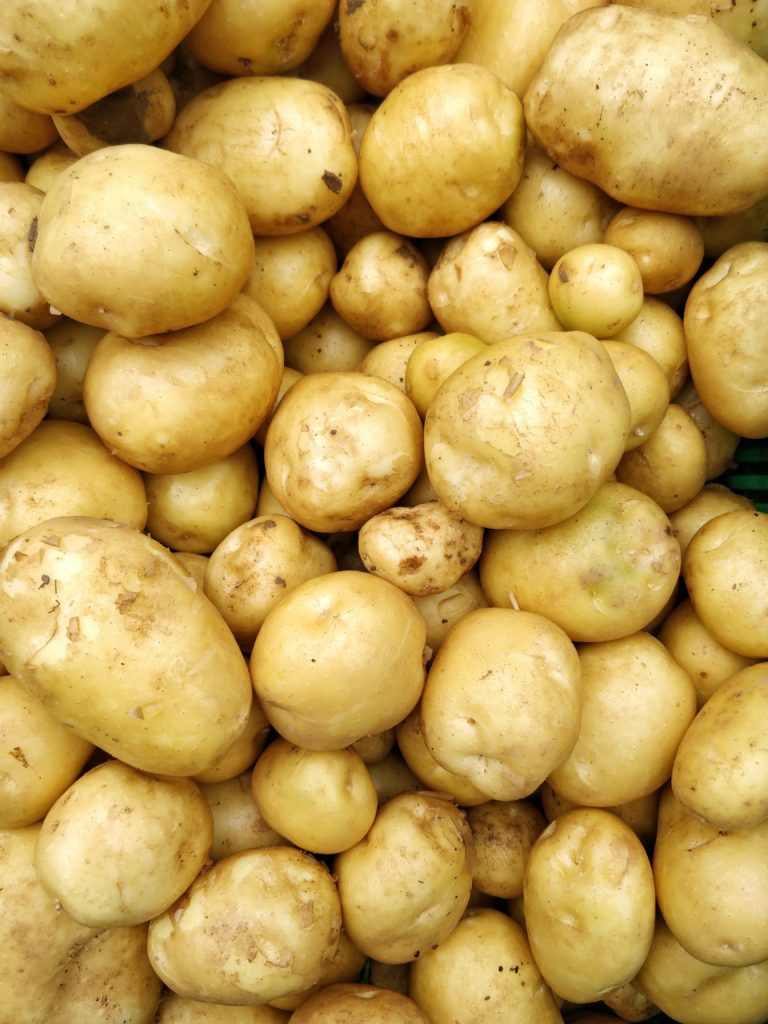
The variety came from Belarus. Ripening period - 60-70 days. But you can start digging after 45 days. The size of the potatoes is large and medium, weight - 110 g. The tubers are rounded. The pulp is dense, white. The peel is yellow, strong, almost without eyes. The number of tubers per bush is 7-11 pieces, Resistant to many diseases.
- good keeping quality;
- tolerates drought well;
- resistant to any weather.
- susceptible to phytophthora.
Spring
votes 0
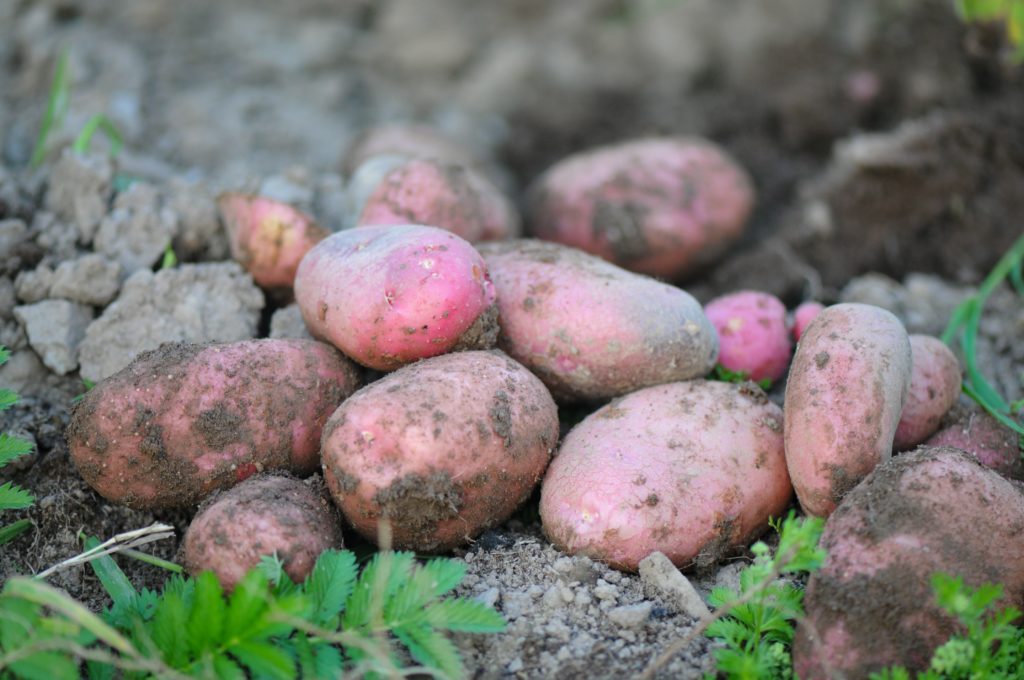
Bred by Leningrad breeders. This variety has a pink color. Renowned for its high yield. It has a good and rich taste. It doesn't overcook and is perfect for cooking a variety of dishes.
- nutritional value;
- high yield;
- good keeping quality;
- great look.
- does not tolerate frost well.
Mid-season
Slav
votes 0

The mid-season variety is often grown for sale, thanks to its presentation. Has excellent taste. It belongs to one of the best varieties. Not much dependent on weather conditions. The tubers are even, neat, retain their shape during cooking. The skin is smooth pink-violet. Almost all tubers are large.
- good yield;
- marketable condition;
- unpretentiousness;
- disease resistance.
- damaged tubers rot quickly.
Sineglazka
votes 0
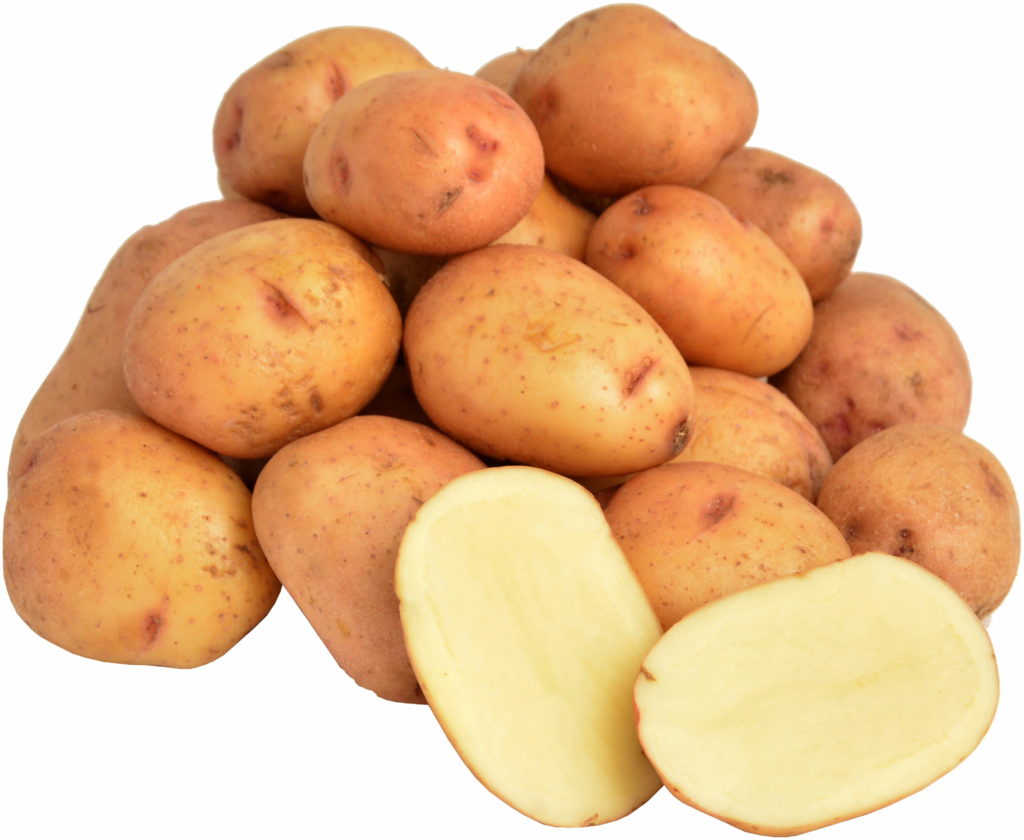
A popular variety among gardeners. Unpretentious, it gives a good harvest in adverse weather conditions. Its peel is creamy-sandy in color with pinkish patches. Tubers are large, oblong. The pulp is white. From this variety of potatoes you can cook any dish. The taste is excellent.
- grade for diet food;
- excellent taste qualities;
- does not suffer from scab;
- productivity is high.
- not subject to long-term storage.
Pennant
votes 0
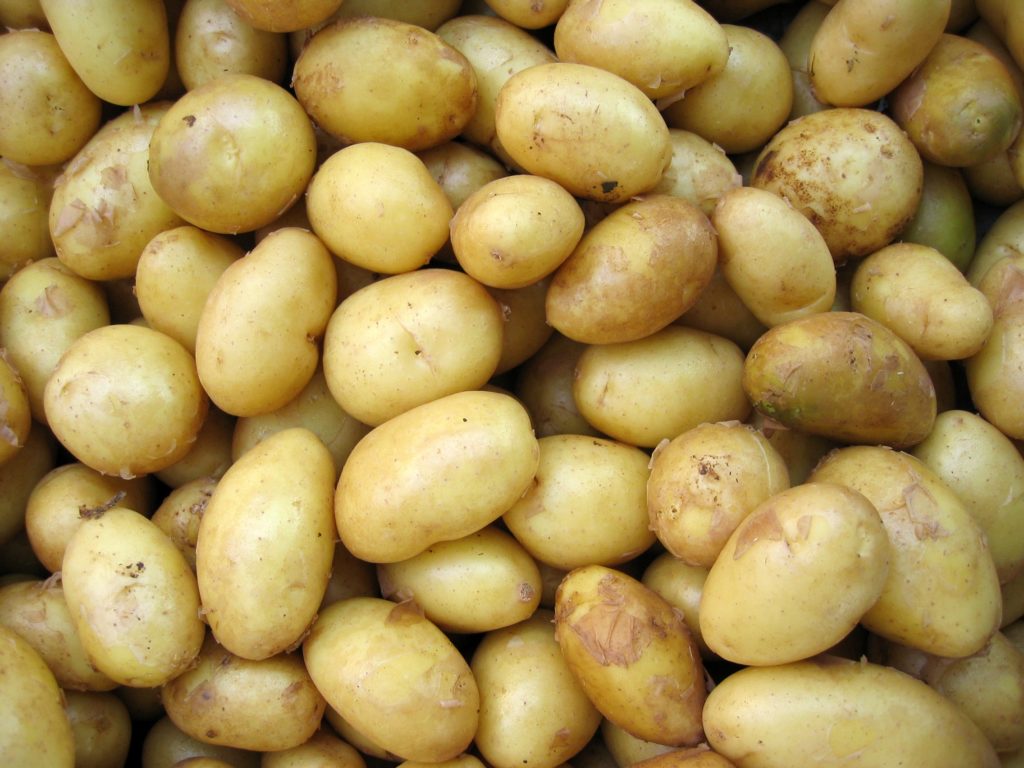
A variety of a domestic producer, approved by agronomists for its high yield, taste and unpretentiousness in care. Root crops are large, the same size. The skin is light yellow, smooth. There are few eyes. The flesh is yellow and firm. Potatoes are suitable for baking, boiling and frying.
- stable yield;
- excellent keeping quality;
- the same size of tubers;
- ideal for purees.
- with a dense planting, the tubers are deformed.
Nocturne
votes 0
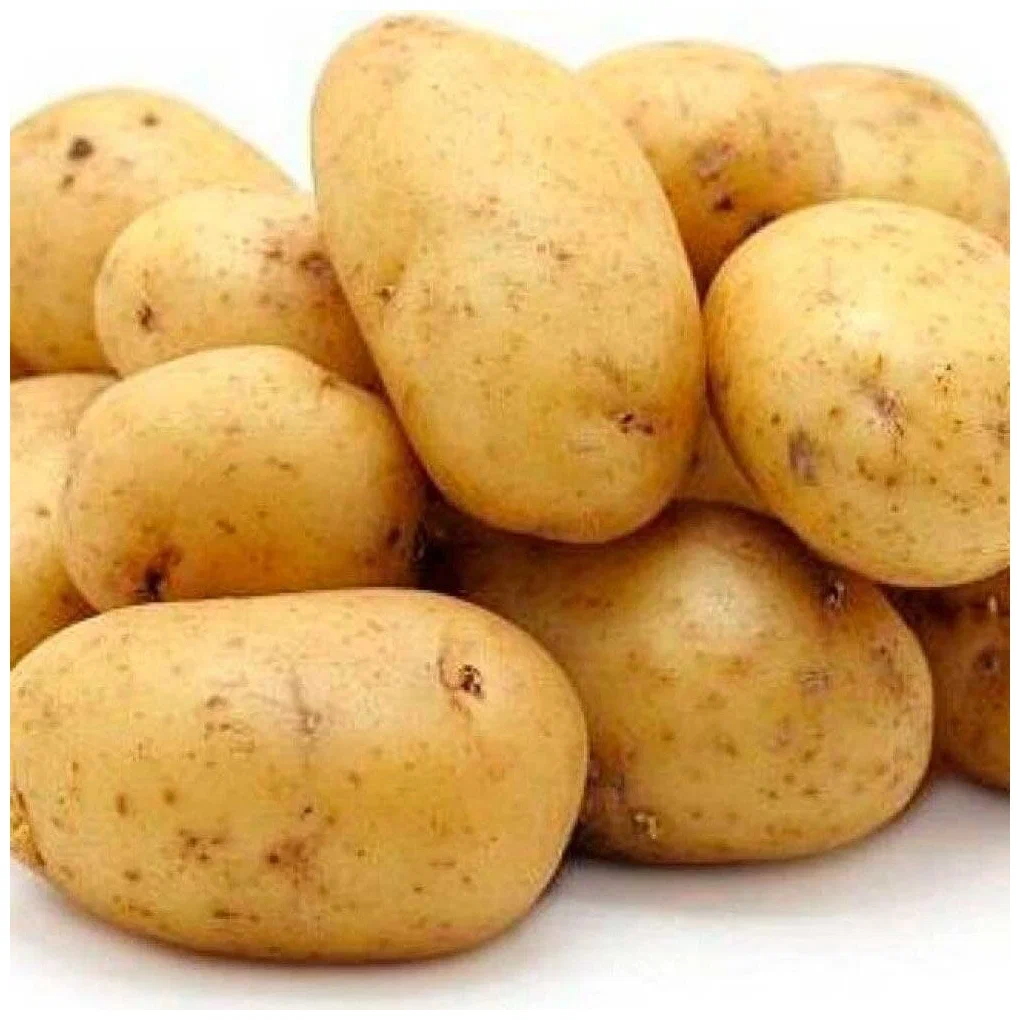
The variety was bred by Russian breeders. Potatoes have good taste, high yield and keeping quality. Oval shape with few eyes. The peel has a pale sandy color. The pulp is light beige, elastic. The variety is versatile and suitable for cooking any dishes.
- resistant to weather changes;
- unpretentious;
- excellent taste qualities;
- rapid tuber formation.
- damaged when excavated.
Mid-late varieties
Medium-late varieties have a ripening period of 95–115 days. They store well and are suitable for winter and spring consumption. Harvesting begins in the middle or end of September. Such varieties are grown without sprouting tubers.
Picasso
votes 0
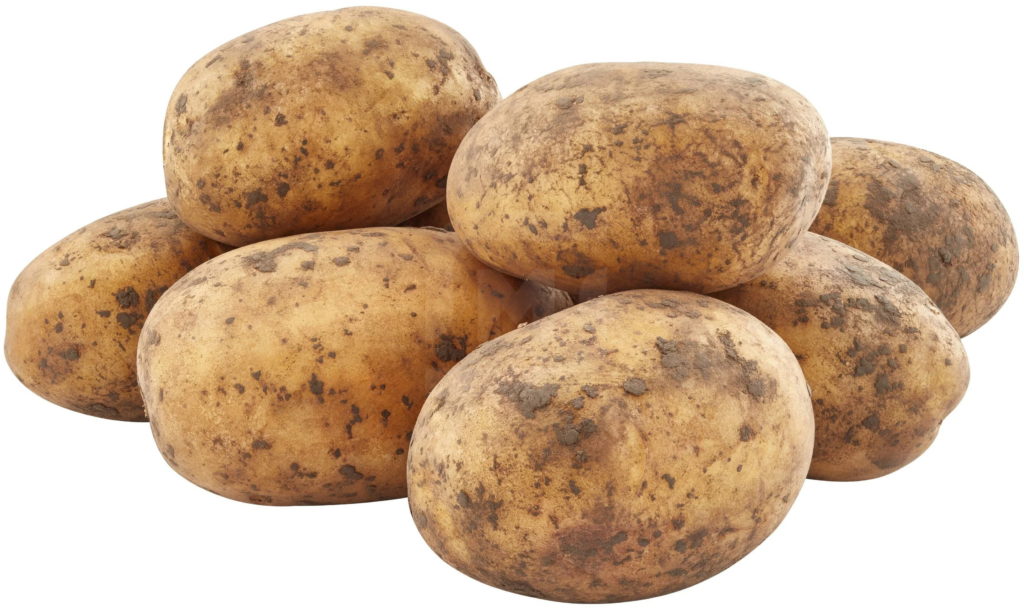
The variety was bred by Dutch breeders, belongs to the middle late. Differs in high productivity. It tolerates drought and hot weather well. Resistant to diseases: scab, nematode and cancer. The peel is yellow, the flesh is light beige. Harvest perfectly stored until spring.
- stored for a long time;
- high yield;
- disease resistance.
- prone to late blight;
- demanding on soil fertility;
- taste is average.
Lorch
votes 0
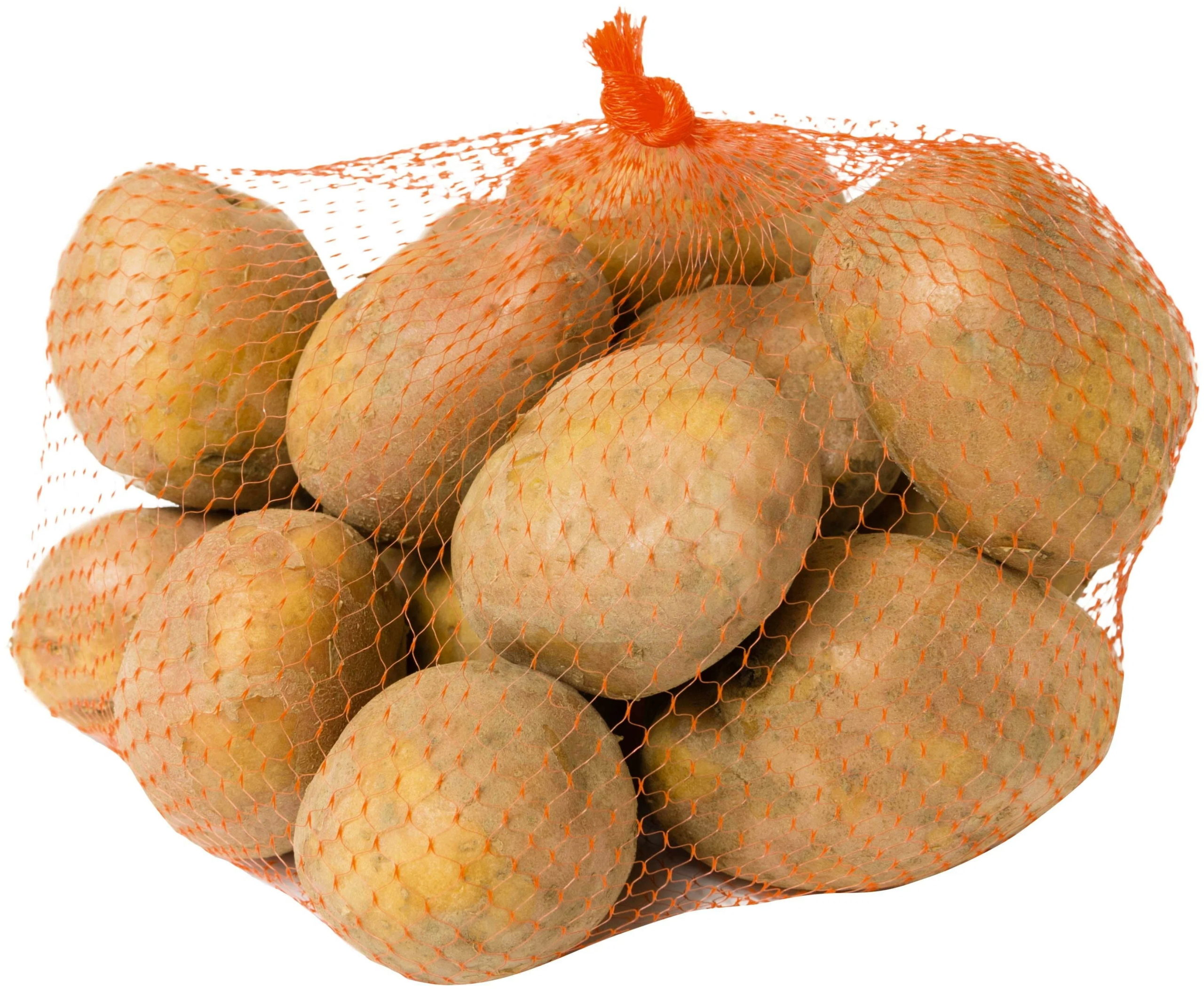
A popular variety among gardeners, belongs to the middle late. The tubers are small.They have a smooth, yellow skin. The pulp is white. Potatoes are stored for a long time, tolerate transportation well. Gives a good harvest.
- unpretentiousness;
- undemanding to the soil:
- excellent taste qualities;
- duration of storage;
- tolerance for changes in weather conditions.
- resistant to late blight.
Gala
votes 0
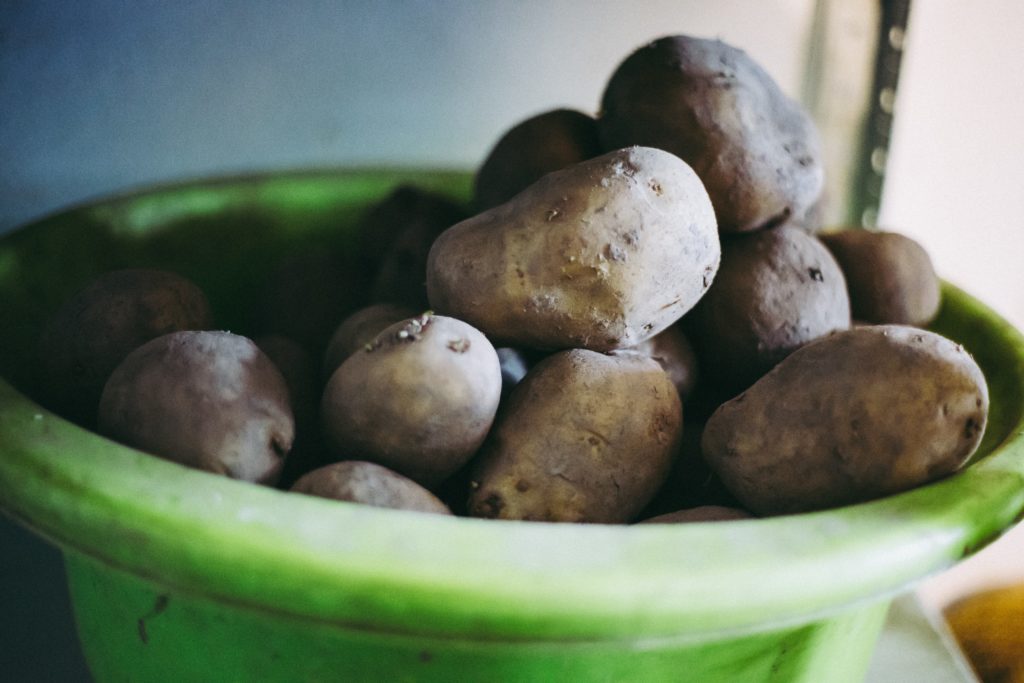
The variety was developed by German breeders. Deserved popularity among professionals, vegetable growers and gardeners. It has excellent taste and keeping quality. Has an oval shape. The eyes are shallow and weakly expressed. Does not darken when cooked and roasts well. The flesh is pale yellow. The variety is resistant to diseases, except for rioctiniosis and late blight.
- great taste;
- easy care;
- undemanding to the soil;
- long shelf life.
- resistant to disease.
Diseases
It is possible to get a good vegetable harvest if protection against fungal diseases is provided. Among them, the most common is late blight. This is a dangerous disease. It affects the tops and tubers. If not treated in a timely manner, the disease can destroy the entire crop.
The main sources of the disease are contaminated soil or the remains of diseased plants. Rotating potato plantings will help reduce the risk of infection.
To increase the resistance of potatoes, fungicides and preparations are used for processing. Such as: "Immunocifat" and "Agat-25K" and others. Mineral fertilizers or wood ash are also used for prevention.
Another dangerous plant disease is rhizoctoniosis or black scab. If the tuber is infected, then during storage, it will rot. The infection affects the entire plant: the root system, leaves, tubers and stems.
Potatoes develop black growths or spots. The leaves begin to curl, and green airy tubers form at the bottom of the plant. A preventive measure for the destruction of infection is the pre-heating of the culture before sowing. The tubers are laid out in the fresh air. One of the popular drugs to combat the disease is "Maxim KS". For small areas, experts suggest using the drug "Kvadris". If this does not help, use the Celeste fungicide.
Alternariosis or brown spot - the disease affects young shoots in dry weather. As it develops, it also spreads to tubers. Brown spots appear on the lower leaves. When dug up, they have brown spots with wrinkles. The reason may be in poor-quality seed, in plant residues not harvested on time. You can lose most of the crop.
The best way to fight infection is the use of chemicals. Among them are Acrobat MC, Albit, Kuprikol and others. The choice depends on the number of treatments and cost.
Those who do not recognize chemicals can use folk remedies: spraying green mass with kefir or whey.
Other harmless biological preparations for processing include Fitosporin, Trichodermin, Gaupsin.
Potatoes often suffer from various parasites and diseases. To keep the plant healthy, it is necessary to inspect it regularly, remove the affected bushes and carry out processing.
new entries
Categories
Useful
Popular Articles
-

Top ranking of the best and cheapest scooters up to 50cc in 2025
Views: 131649 -

Rating of the best soundproofing materials for an apartment in 2025
Views: 127687 -

Rating of cheap analogues of expensive medicines for flu and colds for 2025
Views: 124516 -

The best men's sneakers in 2025
Views: 124030 -

The Best Complex Vitamins in 2025
Views: 121937 -

Top ranking of the best smartwatches 2025 - price-quality ratio
Views: 114978 -

The best paint for gray hair - top rating 2025
Views: 113393 -

Ranking of the best wood paints for interior work in 2025
Views: 110317 -

Rating of the best spinning reels in 2025
Views: 105326 -

Ranking of the best sex dolls for men for 2025
Views: 104362 -

Ranking of the best action cameras from China in 2025
Views: 102214 -

The most effective calcium preparations for adults and children in 2025
Views: 102010



